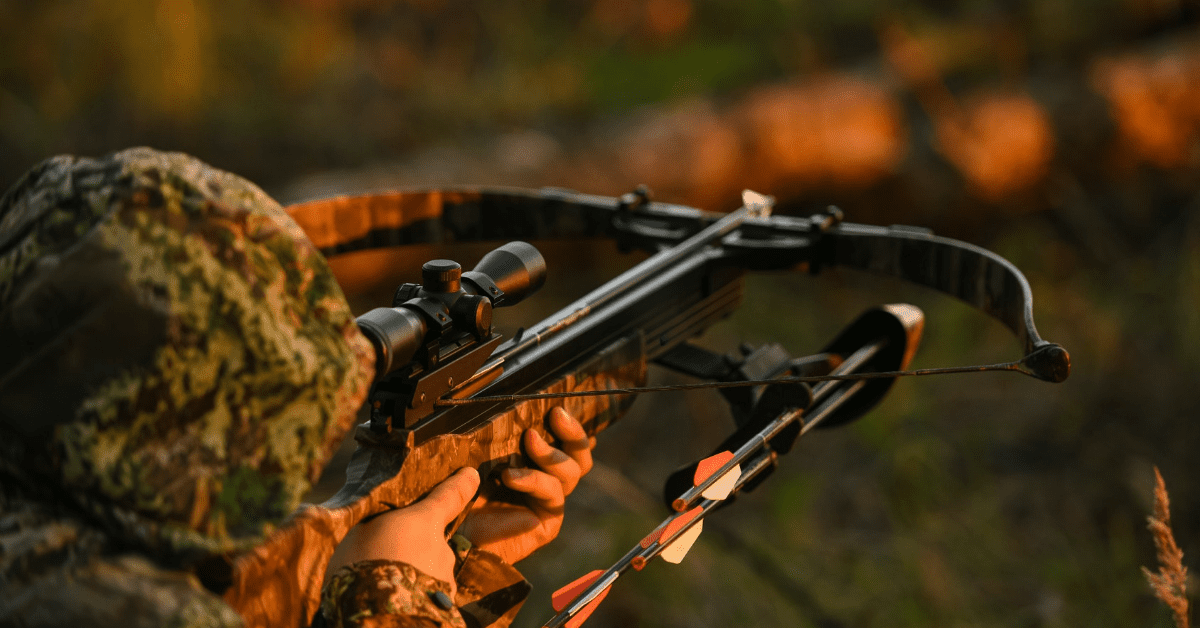With hunting season upon us, the risk of crossbow hand injuries will inevitably rise. Here’s a look at what leads to these mishaps and how they can be prevented:
Crossbow Hunting in Louisiana
Crossbows are designed to work intuitively for rifle hunters by combining a horizontal archery assembly with a rifle stock.
Crossbows are designed to work intuitively for rifle hunters by combining a horizontal archery assembly with a rifle stock. They are still considered a type of archery equipment, so they can be used in all of Louisiana’s hunting seasons – except when hunting migratory birds.
They are also legal in Louisiana Wildlife Management Areas during archery season. Bucks and does may be harvested during deer season, except when there is a bucks-only exception for gun hunting. Big game, basic and bow permits are required. Bow-and-arrow fishermen must have a sport-fishing license.
How Crossbow Hand Injuries Happen
Injuries and amputations typically occur when the trigger mechanism is activated while the thumb or fingers are exposed to the bowstring hazard. The cable moves forward with sufficient velocity and kinetic energy to amputate or severely injure a hunter’s exposed appendage.
User Error
Most crossbow hand injuries are simply the result of user error, typically when a hunter’s hands move too far above the stock and into the path of the oncoming bowstring. Thumb injuries are particularly serious since we rely on that part of the hand. Experts say the thumb may be involved in as much as 40 percent of all hand use. Over time, even the best-made models can create an increased risk for crossbow hand injuries. Make sure your bowstring isn’t damaged or frayed, and that arrows aren’t cracked. Hunters should also wear a safety harness both when assembling and when inside their stands.
Product Design Issues
There are inherent risks to using a crossbow that some manufacturers are addressing by adding barrier guards. In most cases, they add little cost while having no impact on its functionality. “Safety wings” may be added that extend in both directions above the sides of the stock’s fore-grip area to keep hands, thumbs and fingers out of the bowstring path. Mechanical release options work like a small set of pliers to hold the bowstring so hunters don’t have to use their fingers. Product instructions and warnings are also now more prominently displayed.
How to Prevent Crossbow Hand Injuries
You don’t want to leave appendages in the path of the bowstring when it quickly snaps forward. Pay close attention to the stock placement guides, or grooves, located on the crossbow’s forearm. These tell you where to place your fingers and thumbs, and can help prevent crossbow hand injuries. Bring the crossbow to your shoulder before cocking it, in a process known as “shouldering,” and practicing sighting a target. Note where your fingers and thumbs are, and make any necessary adjustments. Hunters can also help prevent these injuries through the use of shooting gloves. Mechanical release options and safety wings are highly recommended.
If You Suffer a Crossbow Hand Injury
There’s nothing like the experience of hunting in the great outdoors, but crossbows can be unforgiving. Avoid injury with proper hand placement and appropriate safety measures. If you’ve injured your hand, however, schedule an appointment with Dr. Donnelly to discuss treatment options.
About Dr. Brandon P. Donnelly, MD
 Dr. Brandon P. Donnelly is a board certified hand surgeon with Pontchartrain Orthopedics & Sports Medicine. Dr. Donnelly completed his hand and microsurgery fellowship at the prestigious Philadelphia Hand to Shoulder Center. Dr. Donnelly treats all ages of patients in the greater New Orleans area for hand, wrist, and elbow conditions.
Dr. Brandon P. Donnelly is a board certified hand surgeon with Pontchartrain Orthopedics & Sports Medicine. Dr. Donnelly completed his hand and microsurgery fellowship at the prestigious Philadelphia Hand to Shoulder Center. Dr. Donnelly treats all ages of patients in the greater New Orleans area for hand, wrist, and elbow conditions.
This site is not intended to and does not provide medical advice, professional diagnosis, opinion, treatment or services to you or to any other individual. Through this website and links to other websites, Brandon P. Donnelly, MD provides general information for educational purposes only. The content provided in this website and links, is not a substitute for medical care or treatment. You should not use this information in place of a consultation or the advice of your healthcare provider. Brandon P. Donnelly, MD is not liable or responsible for any advice, course of treatment, diagnosis or any other information, services or product you obtain through this site.


